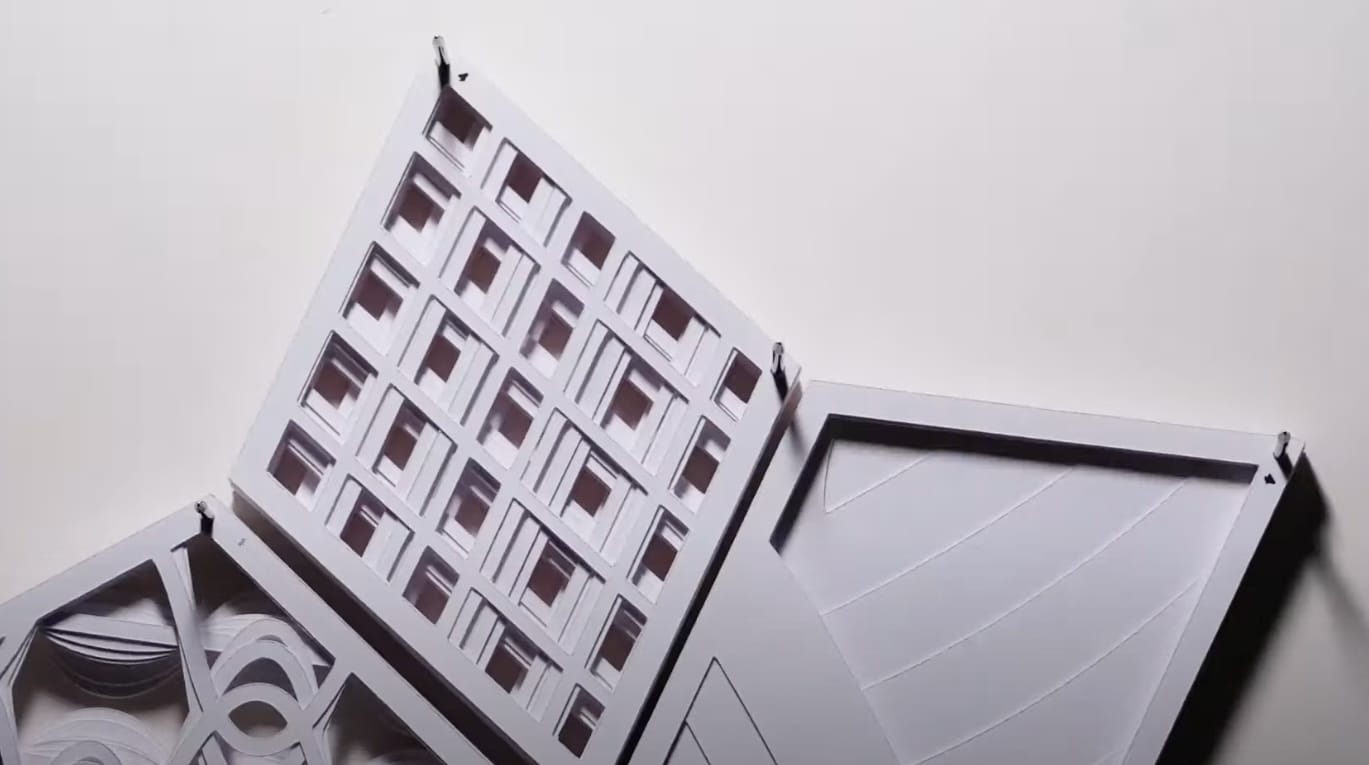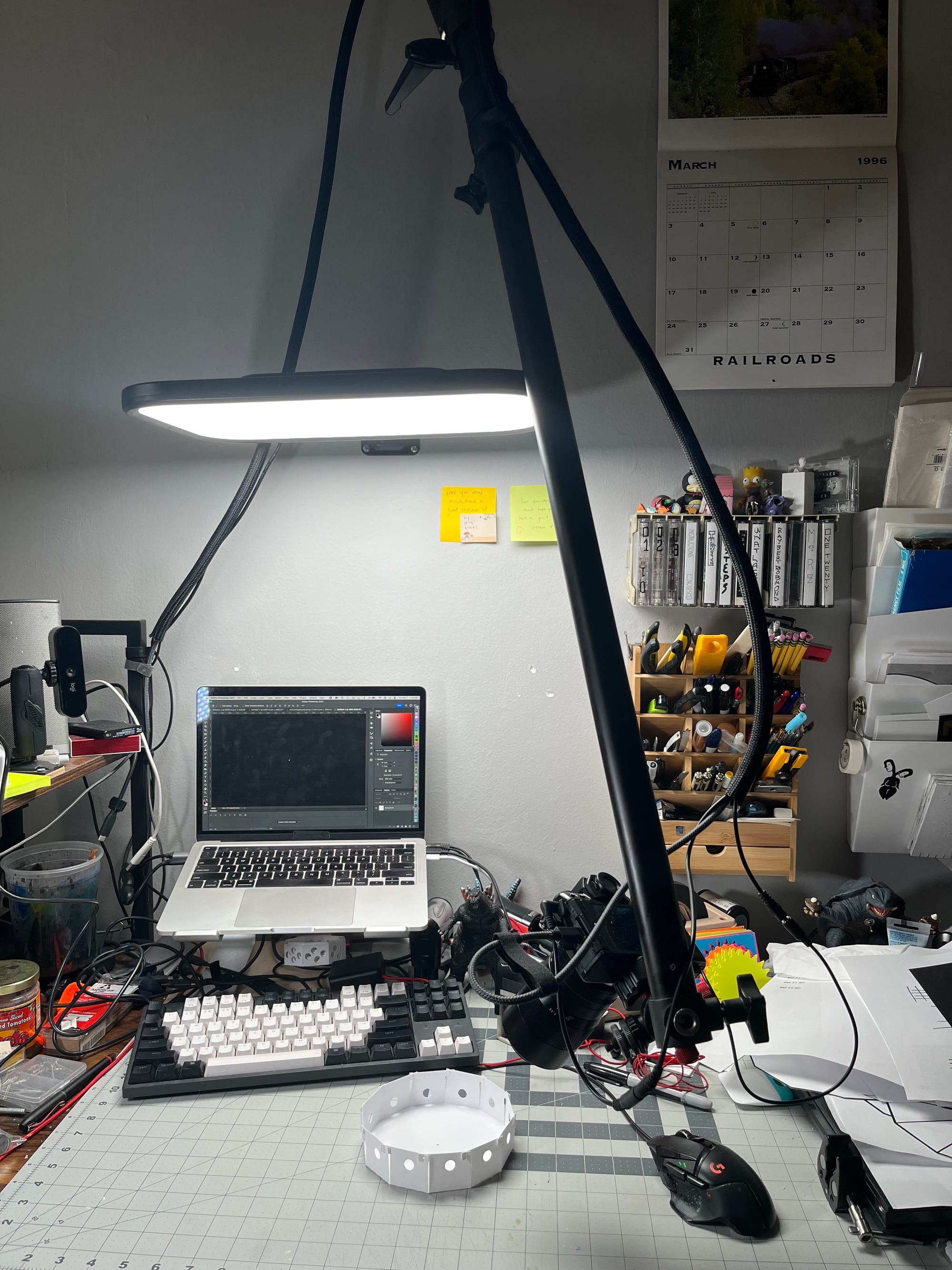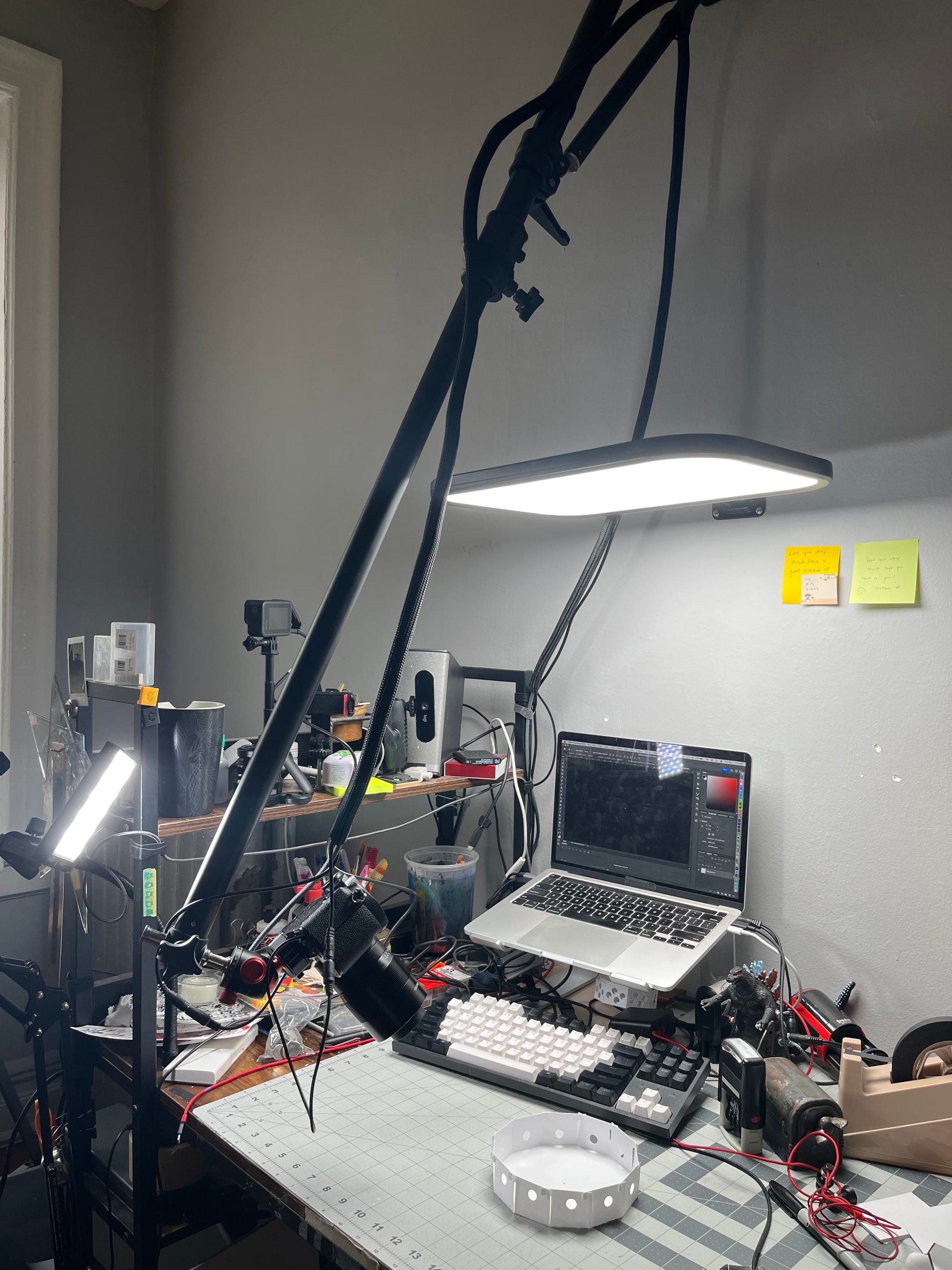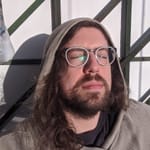Featured Artist Interview: TraceLoops

Experimental animation artist Matthias Brown, known as TraceLoops online, has been using Cuttle to design animation loops. The frames of animation are cut from paper using a Cricut machine, then photographed from a few angles. He then composites the animation with virtual camera movements and original music.
How to animate a loop in Cuttle
I was excited to see that TraceLoops shared a video showing how to use Cuttle's components and parameters to make paper animation.
Subscribe to TraceLoops on YouTube to see more of his cool animation process.
Music video
False Data music video preview
False Data is a music video that features five synchronized animation loops, arranged in a star. Each loop is 24 frames, which is 2 seconds. The separate loops are added and removed with the corresponding music tracks.
Behind the scenes
To get a sense of how one of these loops is set up in Cuttle, we looked through the project.
Each loop is set up as a component, with a parameter that can be scrubbed 0-24 to preview the animation.

TraceLoops planned ahead to have each loop's frames fit in 4 sheets of paper. Notice the use of different colors for each set of 6 frames. The frames are welded together, and the cut lines redrawn between the frames. These hints help the Cricut workflow.

Frame numbers and registration holes help keep things lined up during the animation step.

You can see the furniture upholstery tacks that he uses with the registration holes to hold the frames in place while capturing.
Q&A
✂︎ Do you have any processes, protocols, rituals that have formed around how you create?
I typically have some sort of structure or restrictions as a means of guiding work. For a while I was streaming while working, which was a strong ritual. It can be helpful to have outside accountability for anything.
✂︎ If you could add a feature to Cuttle for your animation workflow, what would it be?
The ability to somehow mute a component. I have set up a workflow where I duplicate projects and then change a base animation component that is embedded into a larger component that functions as the cut file. When I'm doing more complex animations with a lot of parameters, the larger component/cut file can get overwhelmed and everything slows way down. If I could temporarily turn off the cut file component, I wouldn't have to work in a separate project, then copy and paste into the template I've developed when the animation gets complex.
✂︎ What do you value when collaborating with people?
I value people who have a similar vocabulary but different skill set. When I'm saying things like frame rate, resolution, codec, aspect ratio, it's helpful to have sort of a built in shorthand. When people don't have that vocabulary, it reminds me that I know in my mind what something is, but I'm not the best at communicating those concepts to other people.
✂︎ What do you value in your solo practice?
When I'm working alone, I value things working exactly as predicted or failing completely. When things only kind of work inconsistently, that's when things get frustrating.
✂︎ How do you photograph the frames of animation that become a video?



TraceLoop's camera and lighting setup
I have a mirrorless camera, a Fujifilm X-t30, on an overhead mount that I use to photograph cut paper animations. I most often use a macro lens and a remote shutter release so I don't move the camera. I import the stills to my computer and use a mixture of Photoshop and Premier to prep the stills for video output.
✂︎ I'm curious about long it took to make False Data. I can see your attention to music, design, craft, photography, and editing that goes into a two minute music video.
I think about a month, start to finish.
I worked on this, on and off over a few weeks. The music was made with the animation structure in mind. I used simple music patterns that were four beats long at 120 bpm, so 2 second loops. Making the music was pretty quick, maybe an hour. I make music using Korg Gadget on my Nintendo Switch, save it to cassette tape then make a digital recording of the cassette output. I limited the number of instruments to 5 so things wouldn't get so complex in the number of loops running simultaneously.
Designing I have a mix of just in my head planning and physical testing. Which probably took an hour or two of physical organizing. It would have taken a lot longer if I hadn't made a lot of paper loops prior. I then had to map out the sounds and think of how they might be as shapes. Mapping the music was easy for stuff like drums, because it's like a kick every second, which translates easy enough, but sounds that happen faster don't translate as well. The animation is working at a speed of 12 frames every second, so 12 hertz, and humans can hear around 20,000 hertz, so there's a discrepancy there. Animation in general has to fake/recreate an interpretatipn of the perception of time.
I mapped out the individual music patterns for each instrument, then wrote out all the different collective patterns, then how they transitioned between each. Working in Cuttle wasn't too much time, I spread it out over a few days because I needed to cut files and see how they animated with the music.
Cutting out the physical stills in total was maybe a few hours total. I use a Cricut Maker 3 to cut the paper. It's hard for me to judge total cut time because I prep mats, then start cutting, walk away and listen for the machine to stop, come back and switch out the cut mat. I have some thin sheets of plywood that I drill holes into, put upholstery tacks through, and use holes in the cutouts to register everything.
Photographing everything took several days. It wasn't a fun process because of all the transitions between instruments. It was designing a path for several different possible sequences, so some instruments were being added or taken away or staying the same or changing and it gets confusing to remember what's happening when everything looks quite similar and you can't move the camera, registration rig, lights or anything. I photographed this on my desk and that meant I couldn't do anything else at my desk for several days.
✂︎ Some of your animation is very figurative and organic, and some is more math-based. How do you decide which direction a particular project or session will go? How do those sides of your work contrast and complement?
I'm big into process and showcasing how a thing is made in the final product, so that does a lot to dictate the type of animation. It might also be what mood I'm in, if I want to feel like things are making sense and more in control, math might be the way to go, but that can also backfire. If I make a mistake in the math, I'll feel less in control than when I started. Organic and figurative things are a good way to expend aimless energy and there's not really a way to go wrong, it might not be what I expected, but it won't be wrong.
✂︎ Thank you for taking the time to share with us!
Follow TraceLoops on YouTube, Instagram, and Patreon.

